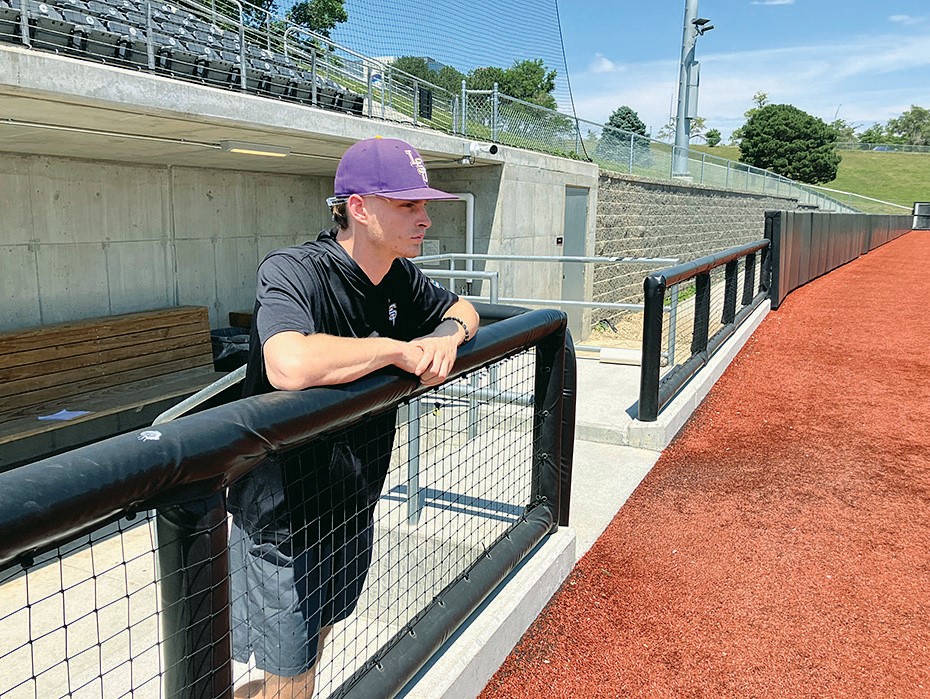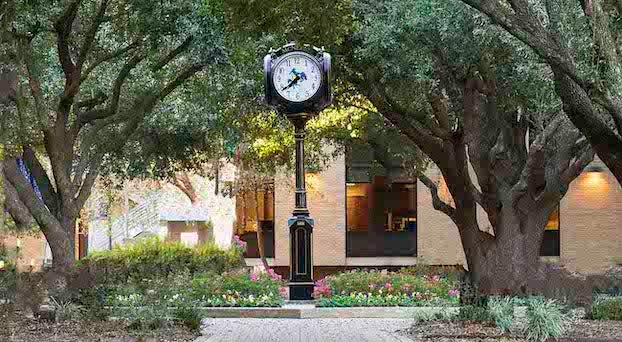Sewer Museum takes tourists underneath ‘City of Lights’
Published 12:08 am Wednesday, August 16, 2017
Mary Richardson / Special to American Press
Paris was breathtaking on the morning my husband and I walked down the broad Avenue des Champs-Élysées. We turned onto Avenue George V and saw the inviting, open doors of the boulangeries, all filled with pastries that seemed impossibly beautiful. My mouth watered, but we passed them by. Then the Seine was in front of us. It reflected the blue of the sky. White and red boats travelled up and down. The Eiffel Tower was on our right and The Louvre was to our left. But we didn’t waiver. We crossed the Seine on the slender Pont de l’Alma and headed to a nondescript little kiosk on the Left Bank. We entered the kiosk, paid for our tickets, and descended into the sewers of Paris.
We were in Les Egouts de Paris, which translates as The Sewer Museum. And there was a certain smell.
According to the museum’s brochure, we were about to explore a “city beneath the city.” We would see Paris “from the underground point of view,” it said. But first, there were a few instructions: 1) do not eat, 2) avoid contact with waste water, walls or pipes,
3) do not run, and 4) wash your hands when you exit.
We agreed to the terms, and went further into the tunnels. And it truly was another world.
THE REAL DEAL
There is nothing abstract about The Sewer Museum. It doesn’t just tell about the sewer system of Paris. You see it in a very personal way because the museum is actually located inside the sewer system. So yes, when we stood on a metal grating and looked down, what was flowing below our feet was the real deal.
The sewer system of Paris is, in my non-scientific but correct opinion, the single most important thing that made Paris the beautiful “City of Light” it is today. Never mind Moulin Rouge or Sacre-Coeur. Never mind the French Revolution and “Liberté, Egalité, Fraternité.” The triumph of Paris is about sewage treatment and potable drinking water.
Paris wasn’t always beautiful, according to the historical displays in the museum. It was a swampy, plague infested, dangerous hell hole. And, as we know from Les Misérables, Jean Valjean had a terrible time getting out of the sewers while he was rescuing Cosette’s boyfriend. “Paris has another Paris under herself; a Paris of sewers; which has its streets, its crossing, its squares, its blind alleys, its arteries, and its circulation, which is slime, minus the human form,” wrote Victor Hugo “… fetid, wild, fierce.”
To be fair, the historical information in the museum pointed out that Paris wasn’t so bad when it was just a little medieval village. It was located entirely on the island where the Seine splits. Now that island is called the Île de la Cité and it is the site of Notre-Dame Cathedral and other wonders, but back then it was just called “Lutetis.” It had the traditional Roman city plan of streets going north-south and east-west. Sewage was dumped on the ground, but pollution wasn’t a problem because not many people lived there. The sewage peculated through the earth before it made its way back to the Seine. The soil filtered out the impurities and odors. Sewage and people were in balance.
But Paris was alluring and people kept moving in. First the Left Bank was populated, then the Right Bank. Then the Normans invaded, which set things back. But afterwards, still more people came, and they brought their horses, cows, pigs and chickens.
RIVER OF POO
By the Middle Ages, everything had turned to #@&%. Excrement and waste water were thrown in the streets, so roads became putrid pools and quagmires. There was so much excrement in the soil that cesspools wouldn’t work. The sewer “system” on the Right Bank consisted of dumping raw sewage and waste water into a former branch of the Seine and a ditch. It either went straight into the Seine or into moats, which then went into the Seine. On the Left Bank, the sole solution was to use the River Bievre as an open sewer. Making things worse, there wasn’t enough clean water for drinking, much less bathing.
In 1200, King Philippe Auguste paved some of the streets, and he added a drain for wastewater down the middle. The next big improvement didn’t happen until 1370 when Hugues Aubriot, Provost of the Mechanics Corporation, built a vaulted, stone-walled sewer under Rue Montmartre. It was about 985 feet long, and it dumped the sewage and wastewater into the Menilmontant brook. The system was still mostly an open air sewer and the air was still putrid.
At the end of the 16th century, Paris had about 250,000 people. By early in the 17th century, the population had grown to 500,000. Paris stunk of pestilence.You could smell the city for miles around.
A cholera epidemic started in India in March of 1815, and by March of 1832, it reached Paris. In the month of April alone that year, 13,000 people died. By the time it was over in September, 100,000 people had died. Still, many of the city fathers refused to believe that bad water and open sewage had anything to do with disease. They said it was just the “miasma,” or bad air, so they voted down paying for improvements to the sewer system. No need.
In spite of the death toll of the 1832 epidemic, by 1845 the population exceeded a million people. By 1860, Paris had 20 arrondissments (neighborhoods) and a population of 1,850,000 — and still no real sewer system and a terrible shortage of water fit to drink.
NAPOLEON TO THE RESCUE
Today’s modern sewer and wastewater system began under the reign of Napoleon III. Napoleon hired three people that the sewer museum calls “men of action.” The first was Baron George Eugene Haussmann, Prefect of the Seine Department.
Haussmann was told to modernize Paris. Napoleon III wanted to widen the boulevards so that it would be harder for people to revolt and barricade the streets, so Haussmann tore down central Paris and replaced the narrow, medieval streets with the wide boulevards of today. But he didn’t forget that he had also been charged with fixing the twin problems of the quality and the quantity of water in Paris.
His first step was to hire Eugene Belgrand, a hydraulic engineer, and Belgrand hired Jean-Charles Alphand, an engineer with the Corps of Bridges and Roads. In 1850, the three men began to design a new Parisian sewer and water supply network. The bones of their system is still used today.
Belgrand’s totally new concept was to have all the wastewater discharged far downstream of Paris. The system worked mainly on the principle of gravity, helped by pumping stations in the low neighborhoods. Belgrand designed large, tall sewage tunnels so there would be room for water lines to supply drinking water, and so that men could stand up to work in the sewers. The new system was mainly completed by 1910.
Ironically, 1910 was the year of the greatest flood in Paris since 1658. The summer had been exceptionally rainy. The ground was saturated, and rain and snow continued to fall into the winter. The Seine River flooded Paris — but not because it overflowed its banks. Instead, water pushed upwards from the new sewer tunnels, the subway tunnels, and the drains. The flood lasted 45 days and the water rose as high as 28 feet.
After the flood receeded, the new wastewater and sewage system was closely examined and improved. All storm overflows were equipped with non-return valves on the Seine side. Pumps were installed to pump surplus water over the embankments and into the Seine.
In 1911, the last open sewer was closed over — the Left Bank’s Bievre River. It’s use as an open sewer from Medieval times had finally come to an end.
Since then, the sewer and wastewater systems have been improved and augmented almost every year. The tunnels are so large that there is room for the drinking water pipes and the non-drinking water pipes, plus telecommunication cables, pneumatic cables and traffic light management cables.
They’ve made navigation easy too, as each tunnel has a street sign that corresponds to the real street above. Such signs would have been of great use to Jean Valjean. Yet, even when peering deep into the tunnels in the museum, it is hard to identify with him. It’s all too clean to imagine yourself trudging with Valjean through the filth and muck, fighting rats, trying not to breathe– and trying not to drown. (I did see a rat, but it was stuffed and in a case.) If Victor Hugo had seen today’s sewer system, he may never have written Les Misérables.
We exited the museum and walked a few feet back to the bridge, the Pont de l’Alma. We looked down at the Seine. The water was still blue. The river was full of boats taking tourists to and fro. Mothers were pushing strollers alongside the water. Joggers flashed by. It was noon and picnickers brought out baguettes and pâté. Notre Dame, the Louvre and the Eiffel Tower looked clean and bright in the sweet smelling air.
But I knew what was below, and I knew we were standing on top of a modern miracle.
I looked around for a place to wash my hands, get a drink of pure water, and give thanks.
When the Beaux-Arts style Pont Alexandre III bridge opened in 1900, it was considered a marvel of 19th century engineering — but the Seine River below it was still polluted. Today, with Paris’ modern sewage system, people enjoy the river. (Mary Richardson/Special to the American Press)
This “wagon bi-boule” is on display at the Collecteur Bosquet, located underneath the Avenue Bosquet (see “street sign” on the right). The sewer inspectors ride these wagons to unstick mud and other items from the bottom of the sewers. (Mary Richardson/Special to the American Press)





